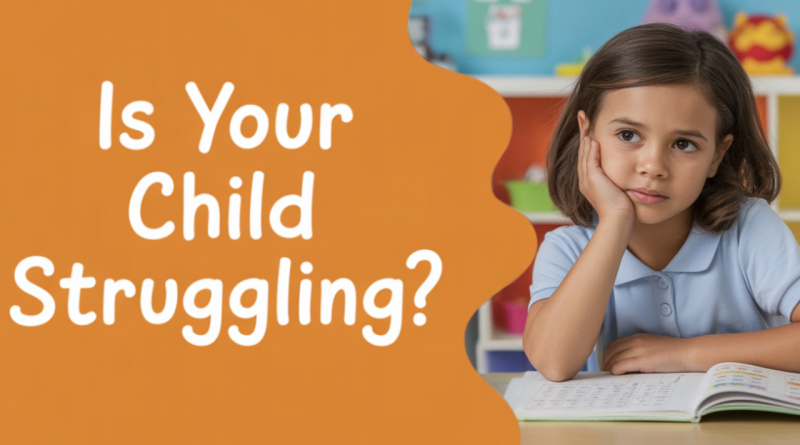The Essential Parent’s Guide: How to Know If Your Child Qualifies for a Special Education Evaluation
As a parent of a child with a disability, few questions are more pressing—or more overwhelming—than: “Does my child qualify for a special education evaluation?”
The process can feel like a maze, but the good news is that you don’t have to navigate it alone. I’m Tonya Wollum, an IEP Coach, and I’m here to break down the fundamentals of how schools determine eligibility, what the law says, and the critical steps you need to take right now.
Understanding Eligibility: Diagnosis is Not Enough
The first and most important concept to grasp is that a medical diagnosis, while helpful, does not automatically guarantee special education services.
Schools use the Individuals with Disabilities Education Act (IDEA), which outlines 13 categories of eligibility. These categories include, but are not limited to: Specific Learning Disability, Autism Spectrum Disorder, Speech or Language Impairment, Emotional Disturbance, and Other Health Impairment (OHI)—where conditions like ADHD often fall.
For your child to be eligible for an Individualized Education Program (IEP), the IEP team must determine two things:
- Your child has a disability that falls under one of the 13 categories.
- The disability adversely impacts their educational performance and requires specialized instruction.
For example, a child may have ADHD (qualifying them potentially under OHI), but if they are maintaining high grades and succeeding without support, the school may deny eligibility because there is no educational need for an IEP.
The Critical First Step: Putting Your Request in Writing
If you suspect your child is struggling, do not wait for the school to initiate the process. You, as the parent, have the right to request a special education evaluation.
This request must always be made in writing. A casual conversation with a teacher, while helpful, does not count as an official request.
Action Steps for Your Request:
- Address it to the right person: Send the letter or email to the school Principal or the district’s Special Education Director.
- Date it: This date starts the clock. Schools have specific timelines (often around 60 days, depending on your state) from the date of receipt to complete the evaluation.
- Explain your concerns: Briefly and clearly state why you suspect a disability and how it affects your child’s learning (e.g., struggling with organization, significant difficulty reading, behavioral challenges).
(Resource: I created a free, ready-to-use IEP Evaluation Request Letter template available at https://waterprairie.com/letter to make this step easy for you.)
What Happens After You Send the Letter? The Evaluation Process
Once the school receives your letter, the evaluation process begins. This may involve a combination of testing and observations, including:
- Academic assessments
- Psychological testing
- Speech and Language testing
- Occupational therapy assessments
- Behavioral observations and checklists from teachers and parents.
All this data is compiled and shared at the IEP Eligibility Meeting.
The IEP Eligibility Meeting: You Are an Equal Team Member
This meeting includes you, school administrators, your child’s teacher, and specialists (like a school psychologist or speech pathologist) who interpreted the testing results.
Your voice is paramount. The team reviews the evaluation results and determines if your child is eligible under IDEA.
- If the team says “Yes,” the school must create an Individualized Education Program (IEP) to provide specialized support.
- If the team says “No,” you still have options! You can request an independent educational evaluation (IEE), request a 504 plan for accommodations, or dispute the decision.
What You Can Do Right Now
Don’t feel helpless while you wait. Start preparing your evidence:
- Document: Keep a log of struggles, grades, teacher notes, and your observations of your child’s attitude or frustration levels at home.
- Communicate: Talk to your child’s teacher about what interventions and supports they have already tried in the general education classroom.
The sooner you start the process, the sooner your child gets the support they need to succeed. You are your child’s best advocate.
Watch or Listen to Episode 139 of the Water Prairie Chronicles podcast for more information!
Frequently Asked Questions (FAQ):
Q1. What is the difference between a medical diagnosis and school eligibility?
A medical diagnosis confirms a condition, but school eligibility for special education (under IDEA) requires that the condition must adversely impact the child’s educational performance and necessitate specialized instruction.
Q2. Which school personnel should receive my written request for evaluation?
The request must be sent to the school Principal or the district’s Special Education Director. Copying the teacher is optional, but not sufficient as the official recipient.
Q3. How long is the school allowed to take to complete the special education evaluation?
While timelines vary by state, the school typically has around 60 days from the date they receive the written request to complete the evaluation and hold the eligibility meeting.

